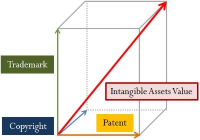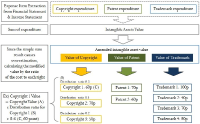PURPOSE This study aimed to identify and establish ESG activity assessment factors tailored for sports brands, offering a foundational framework for fostering sustainability within the sports industry. METHODS A Delphi survey was conducted between December 1, 2022, and January 31, 2023, involving university professors, sports brand executives, ESG researchers, sports marketing majors , a nd sports brand influencers. Data were analyzed using SPSS WIN 24.0 and MS Excel, encompassing research subject classification, consistency verification, and empirical analysis. RESULTS The assessment of ESG activity evaluation factors of sports brands revealed that governance, social, and environmental dimensions ranked in descending order of relative importance. Among specific evaluation criteria, the adoption of employee ethics regulations was deemed paramount in the governance evaluation area, while support for stakeholder welfare and social well-being took precedence in the social evaluation category. In the environmental sector, the production and delivery of eco-friendly, durable products held the highest significance. Further analysis, considering the weighted priorities of all evaluation factors, emphasized the importance of factors, such as the adoption of employee ethics regulations, support for stakeholder welfare, social well-being, and the production and delivery of eco-friendly, durable products. Conversely, disclosure of company information and issues, support for the underprivileged, and general shareholders' meeting or agenda for the protection of shareholders' rights and interests ranked lower. CONCLUSIONS In summary, this study validates the role of governance (G) aspects within ESG activities for sports brands, alongside environmental and social dimensions. It highlights the importance of a balanced ESG framework, particularly in an era marked by heightened social responsibility awareness among consumers. Prioritizing governance in marketing strategies not only distinguishes sports brands but also necessitates impactful promotion and advertising efforts.
Purpose The purpose of this study is to investigate the factors for setting proper training duration of frequency that can guarantee the student athletes' right to study and performance, and to derive the ranks of setting proper training duration of frequency of student athletes by school level. Consequently, to provide basic data for the development of training guidelines for the growth period of Korean student athletes. Methods Delphi and Analytic Hierarchical Process(AHP) techniques were used. The Delphi survey was conducted in three phases, and collected data through Delphi survey were computed by SPSS win ver. 22.0 and Excel, using the mean, standard deviation, median, and coefficient of variation. Using the AHP technique, we classified the factors for setting proper training duration of frequency derived through Delphi survey, and calculated the importance by using Microsoft Excel 2010. Conclusion First, elementary students should be guaranteed regular class participation, have basic after school training, and be provided with adequate rest so that they do not lose interest in the exercise. Second, middle school students are required to decide whether to continue exercise based on their ability to exercise and abundant experience. Therefore, when abandoning the exercise, students should be able to faithfully carry out their academic performance. Third, high school students are directly related to college entrance and employment, so they have to concentrate on performance rather than on academic performance.
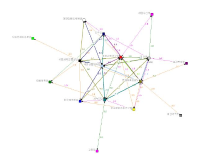
The purpose of this study was to investigate structural characteristics and participants` roles & functions of sport policy network in Korea, by social network analysis on structural characteristics of sport policy network and AHP analysis on participants` roles and functions. For that, 21 executive officers from 19 organizations and agencies related to sports policy were selected as study subjects, and, the materials collected from whole twice surveys on them were analysed by Ucinet 6 and Expert Choice 2000 program. As the results, the governmental organizations like the Blue House and Ministry of CultureㆍSports and Tourism composed the central position group of sport policy network of Korea, and took the main functions of planing and arrangement within their main roles of policy agenda formation and policy decision, so, sport policy network of Korea could be called centralized network by government. And, in cases of private agencies, Korea Sports Council composed the central position group only in policy network of professional sport, Korea Council of Sport for All of sport for all, and Korea Sports Association for the Disabled of disability sport, and, each of them took the main roles and functions of policy execution in their fields, so, it was obvious that the private agencies were divided into their own sport policy areas.

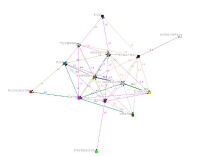
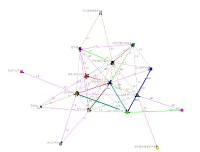
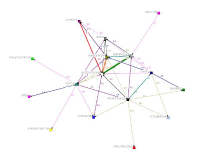

This study was to analyze the hierarchical importance of successful intelligence in Football coaches and players. In order to explore the hierarchical importance of successful intelligence 24 football coaches(under AFC A course) and 20 Korea Football Association U15 Players were responded to analytic hierarchy process questionnaires. In the Analytic Hierarchy Process, football coaches and players completed the AHP Questionnaire with creative intelligence, analytical intelligence and practical intelligence. The hierarchical importance order of successful intelligence for coach and player were analytical intelligence, practical intelligence, and creative intelligence respectively. Evaluation of hierarchical importance of successful intelligence for coach is analytical intelligence(.542), practical intelligence(.278), creative intelligence(.181) in order. Evaluation of hierarchical importance of successful intelligence for coach was analytical intelligence(.684), practical intelligence(.161), creative intelligence(.155) in order. The hierarchical importance of successful intelligence for coach and player were similar each other. Analytical intelligence, was evaluated most important factor for coach and player in successful intelligence. Successful intelligence is important issue for sport performance. More consider needs to Successful intelligence for sport psychology researchers.





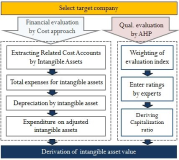
Purpose In the field of sports industry, the intangible assets of sporting companies often show discrepancies between accounting information and corporate value because of conservative current accounting standards. Therefore, this study intends to present a valuation model of intangible assets of sports industry based on cost approach, as a part of a method of capitalizing intangible property expenditures. And we tried to verify the valuation model of intangible assets derived from the research on actual sports companies. Methods To accomplish the purpose of the study, reviewing the literature on various related precedent studies and examining related valuation methodology, legal basis, and representative valuation models were utilized. And to verify the effectiveness of the derived model, Tobin q values were derived and compared. A simple regression analysis was used to verify the explanatory power of the derived model. Results The financial evaluation was conducted based on the cost approach, which enables relatively objective evaluation through the existing financial statements, and a valuation model with the procedure of duplicating the AHP evaluation to reflect the characteristics of the individual intangible assets was presented. In addition, in order to verify the proposed valuation model, the valuation was conducted by putting the accounting information of the sports companies into the intangible asset valuation model presented in this study. As a result of the statistical analysis on the evaluation results, the intangible asset value evaluation model presented in this study is proved to be significant based on statistically high explanatory power. Conclusion Therefore, if it is possible to appropriately evaluate the enterprise value of sports companies through the intangible asset valuation model based on the cost approach presented in this study, various types of technology financing will be possible in the sports industry. And this is expected to accelerate the growth of the sports industry in the future.

